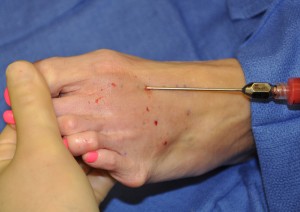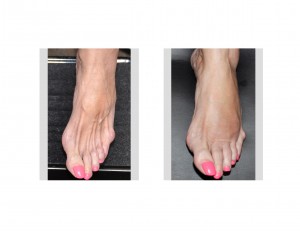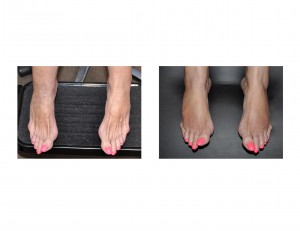Background: The feet age not unlike the many changes that occur throughout the rest of the body. Tissues weaken, muscle and fat loses volume, and ligaments and joints become less elastic. But the feet are unique because they have to sustain a greater amount of weight than any other structure in the body. Unlike the free floating hands where age-related structural changes are well known, the feet additionally become wider, flatter and somewhat longer. They may have some persistent edema due to leaky veins and lymphatic fluid retention.
Fat loss on the feet are associated with aesthetic and functional changes on both their top and bottom. Like the dorsum of the hands, the feet develop skeletonization with volume loss that makes the rays and extensor tendons very prominent. This deflation can also make the skin look more wrinkled and thinner. The fat pads on the bottom of the feet also thin, losing protection of the bones and leading to potential discomfort when walking.
Aesthetic rejuvenation of the feet can be done by volume restoration by fat replacement, similar to that of the hands. Decreasing the prominence of the rays and thickening the tissues on the top of the feet make them look longer. Soft tissue augmentation, which not directly augmenting the fad pads on the balls of the feet, may still lead to less foot discomfort when walking. Unlike the hands, however, the one aging change that you usually don’t see on the top of the feet are brown spots or sun-induced pigmentation changes, thus adjunctive skin treatments are not needed.
Case Study: This 65 year-old female was to undergo a facelift procedure that employed some fat injections for facial volume enhancement. She was also concerned about the very bony appearance of her hands and feet and wondered if they could be injected with fat as well.


Case Highlights:
1) The feet age similar to that of the hands by loss of volume and skeletonization of the rays of the toes.
2) Fat injections help rejuvenate the feet by volume restoration, increasing the subcutaneous fat layer over the toes and making them look less boney.
3) Recovery after fat injections is associated with protracted swelling that is well known in foot surgery.
Dr. Barry Eppley
Indianapolis, Indiana



